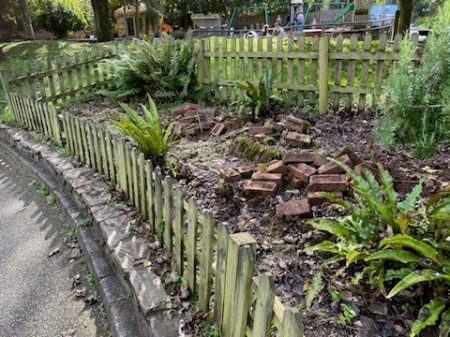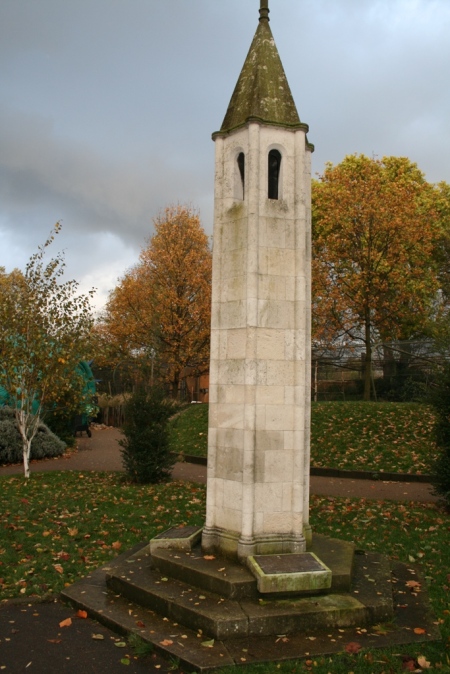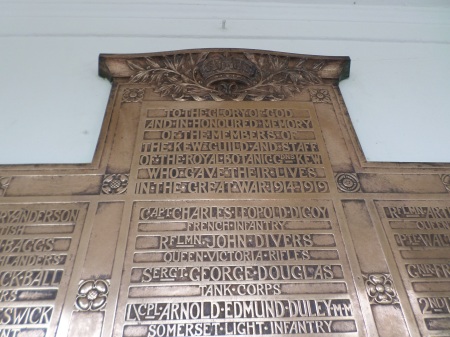Arriving at the office in Oakfield House in Chester Zoo 70 years ago this week, the first week of February 1943, the wartime postman (or more likely postwoman) carried some sad news. One letter was postmarked Manchester 31 Jan 1943 (about the time and date that I draft this blog 70 years on) and stamped with an attractive orange 2d and green 1/2d stamp bearing the portrait of the Queen’s father George VIth. Within was a short handwritten letter on one piece of paper:
“I feel sure that you will be sorry to hear of the death of my brother, Peter Felix Falwasser, whilst on active service in the Middle East. He died in hospital on December 23rd as the result, no doubt of the serious injuries he had received at Tobruk a long time ago. Subsequently he had operation but he seemed to have made a good recovery. He had for some time been on base duties at GHQ, so that his death, when seeming to be comparatively safe, comes as a severe blow…” (letter by John F Falwasser to the Mottershead, 30/1/43, Chester Zoo Archive).

Selection from letter 27 March 1941 reprinted in Chester Zoo Archive Zoo News, 1942/3
This letter is filed away in the archive of Chester Zoo amongst hundreds of letters to and from its enterprising founder George Mottershead, saved by the zoo and his daughter June over many decades.
Among this archive has recently come to light a small batch of four poignant letters written by or about the zoo’s early aquarist in the 1940s, Peter Falwasser.
“Possibly you had heard from him””, John Falwasser’s letter continues, “but in any event you will like to know that his interests in wildlife and nature were most helpful to him while on Active Service & during a recent leave to Palestine.”
Peter was a 26 year old ‘bomb casualty’ of the desert war, buried in a trench during an attack by a German dive bomberat Tobruk. He lost two of his mates who died from their injuries, lost the hearing in his right ear and received back and chest injuries which put him in the 63rd General Hospital hospital in Egypt for four months. In the same letter (opposite), he describes the wildlife he’d seen. He went back on active service to his regiment in 1942. Gunner P.F. Falwasser, 952126, (Rocket Troop, B/O Battery) 1st Regiment Royal Artillery, Middle East Forces is buried in a Commonwealth War Graves Commission hospital-linked cemetery at Heliopolis, near Cairo in Egypt. A photograph taken by the Rogers family of Peter’s grave in Egypt can be seen online at the excellent website of the The War Graves Photographic Project.
Peter had written three other surviving letters, one of which was already part published in the Chester Zoo News, all about the wonderful range of fish, birds and other wildlife he hoped to bring back to Chester Zoo after the war. Peter’s last letter to the zoo arrived in the same post as the one from his brother, announcing his death. These letters are a gift to a zoo historian studying wartime conditions in zoos, full of his questions home which prompt other questions 70 years later:
“I often wonder how the zoo is jogging along and whether attendances are keeping up. Rationing of foods must be making things very difficult for you. Since I have been abroad I have twice visited the Cairo Zoo …” (Undated letter to George Mottershead by Peter Falwasser, 1941? 1942? Chester Zoo Archive)
” I often wonder how things have been going on at the Zoo especially through a wartime winter? The only news I have of your activities was a small newspaper cutting sent by my sister concerning the removal of certain animals from Bristol Zoo to Chester Zoo for the war’s duration. This I took as a good sign that the Zoo was still flourishing & I hope it continues to do so … Raids on Liverpool have given me some qualms as to the safety of the zoo … .” (Letter to George Mottershead by Peter Falwasser, 27 May 1941  , Chester Zoo Archive)
, Chester Zoo Archive)
Chester Zoo and its ‘new’ aquarium continues to flourish, 70 years on, in its own way a fitting testament and memorial to the memory and hard work of ‘Mr Mott’, his daughter June and keepers like ‘gentle Peter’ Falwasser (as June describes him in her memoir Reared in Chester Zoo)
“I was very pleased indeed to hear that you have had a record season and really wonder how you have managed it. I’m afraid that any other man would have given in long ago … I should be interested to know what staff you have now and what you have lost in the way of the parrots … as seed became scarcer and more expensive … I am sorry that Chester Zoo’s aquarium had had to be neglected owing to lack of interest on the part of the staff. What have you got left and are you still using all the tanks?” (Letter to George Mottershead by Peter Falwasser, 10/11/42, Chester Zoo Archive).
This letter is likely to be his last letter, the one mentioned in Chester Zoo News (all of which newsletters are scanned an available on Cd disk from Chester Zoo’s library). With this last letter is Peter’s photograph of a lion from Tel Aviv Zoo, Palestine, dated 19th Oct 1942.
Peter knew the Chester Zoo aquarium that he and the young schoolgirl June Mottershead created in the basement of Oakfield House was not faring well. This happened to many wartime aquariums, big and small. Oakfield House is still open for dining and conferences, part of the attractive gardens of Chester Zoo. As a result I have spent several convivial meals and evenings during zoo conferences below the ground floor there, little knowing what hopes of a fine wartime fish collection and of a zoo career after the war were frustrated by Peter’s death. His letters were full of plans for the new aquarium after the war, and notes on species to stock:
“If things come out OK after the War, you must build a good reptile house in place of the old greenhouse and as time goes on a Sea Lion Pool as I feel that both would be good attractions; they only have a couple of Sea Lions at Cairo but there is usually as big a crowd there as anywhere. They charge each person 1 pt (two and a half old pence) to throw one fish into the pool, quite a good money maker.” (Letter to George Mottershead by Peter Falwasser, 10/11/42, Chester Zoo Archive).
At my home zoo at Newquay, where the World War Zoo Gardens project is run from, we fundraise in the main season in much the same way by selling sprat fish to visitors to feed our Humboldt’s Penguins during keeper talks. Newquay Zoo Has Chester Zoo links in that Peter Lowe an ex- Chester keeper designed and ran the zoo including its penguin pool in 1969 with advice from George Mottershead. Many years later Chester-born penguin chicks came to reinforce our breeding programme.
The two and a half pence a fish in 1942 has now gone up to 50p a fish today! Peter Falwasser would be pleased to see how Chester Zoo has grown to become an active breeding centre of endangered species, including fish. A Sea Lion pool was built after the war and there are several impressive reptile areas, including Komodo dragon lizards. “Lizards abound everywhere in the desert …” , he wrote in his May 1941 letter. Few could have foreseen in 1942 the need for Chester Zoo’s new Act Now! conservation projects for endangered wildlife.
Is there a photograph of Peter Falwasser anywhere in a family album? I am currently researching a little more about Barnsley born Peter Falwasser’s family history.You can see my growing Falwasser family tree based on research in several other family trees on ancestry.co.uk. His solicitor father John Felix Falwasser of Cawthorne Lane, Kexborough nr. Barnsley in Yorkshire (1870-1940) and mother Mary Annie (nee Cousins, 1870-1932) appear to be dead by the time Peter joined the Army.
Peter was the youngest of eight children, two of whom died very young (Ione, 1900-1915 and daphne 1909-1912). John Frederick Falwasser, his older brother (b. 1902) had the sad task of dealing with Probate and Peter’s Will, along with help from his unmarried older sister Christine (b.1905). Peter mentions wartime letters from his sister(s) as he had several other siblings Theodore (1903-1979), Angela (1907-1999) and Katherine (b. 1912) who would long outlive him.
In a recent Chester Zoo blog post update in September 2014 to link with the BBC series Our Zoo, there is more information about Peter’s older sister Christine Rossetta Falwasser who was a gardener and writer.
I will update the blog as I find out more about Peter and other zoo keepers and botanic garden staff who served in wartime.
All the Falwasser letters are quoted from with the permission / copyright of the Chester Zoo Archive.


 This Victorian ‘theme park’ or leisure gardens creation of Belle Vue Zoo closed in the mid 1970s.
This Victorian ‘theme park’ or leisure gardens creation of Belle Vue Zoo closed in the mid 1970s.






























